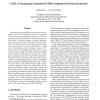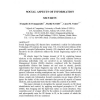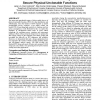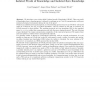113 search results - page 21 / 23 » Attacks on physical-layer identification |
ACSAC
2004
IEEE
13 years 9 months ago
2004
IEEE
Many network security problems can be solved in a centralized TCP (CTCP) architecture, in which an organization's edge router transparently proxies every TCP connection betwe...
ISSA
2008
13 years 7 months ago
2008
Social Engineering (SE) threats have constituted a reality for Information Technology (IT) systems for many years. Yet, even the latest editions of the generally accepted Informat...
ISLPED
2010
ACM
13 years 6 months ago
2010
ACM
The unique and unpredictable nature of silicon enables the use of physical unclonable functions (PUFs) for chip identification and authentication. Since the function of PUFs depen...
ACMSE
2005
ACM
13 years 11 months ago
2005
ACM
Accurate identification of misuse is a key factor in determining appropriate ways to protect systems. Modern intrusion detection systems often use alerts from different sources su...
EUROCRYPT
2008
Springer
13 years 7 months ago
2008
Springer
We introduce a new notion called -isolated proofs of knowledge ( -IPoK). These are proofs of knowledge where a cheating prover is allowed to exchange up to bits of communication wi...




